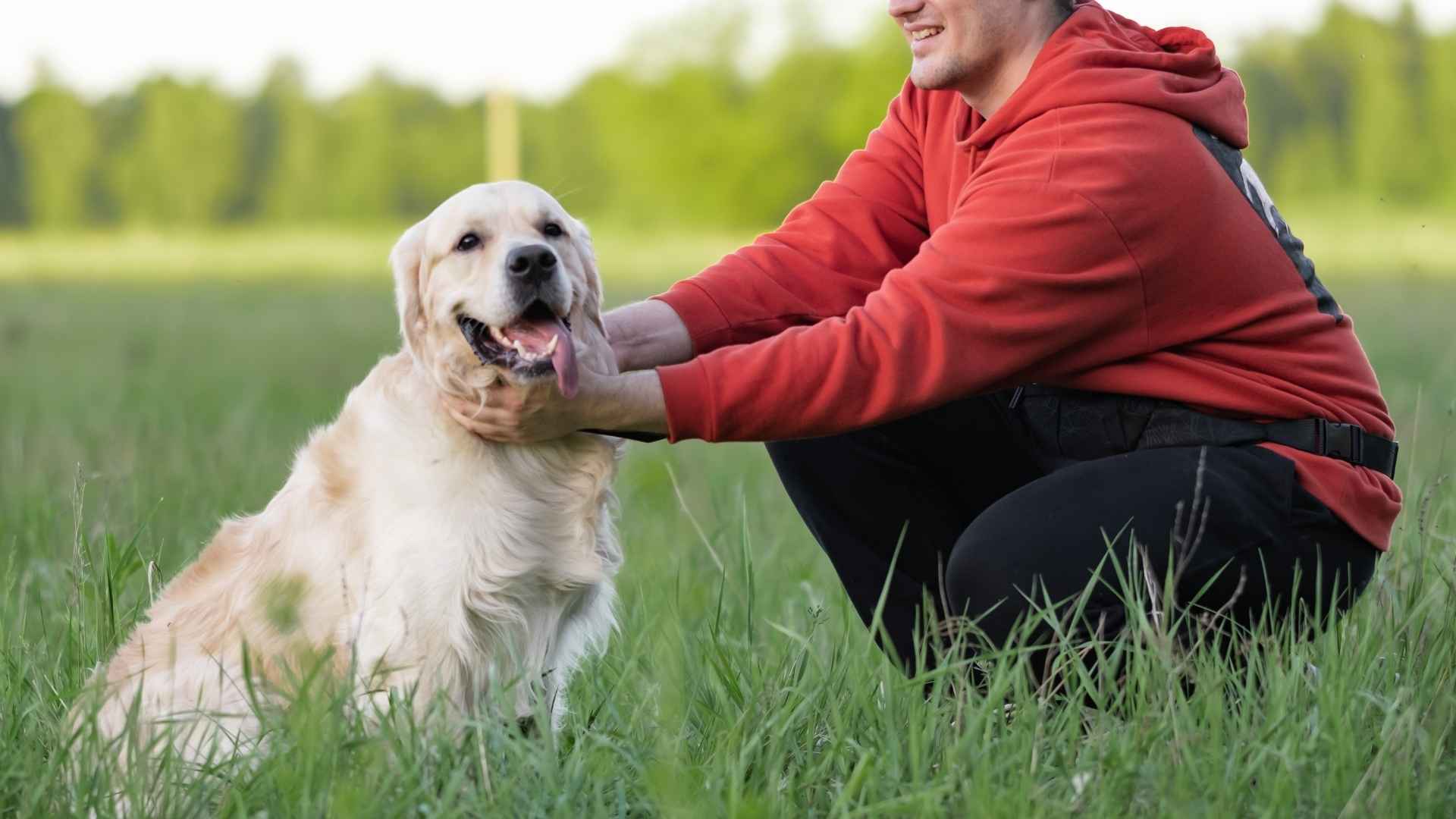Retrievers have long been celebrated for their unique blend of intelligence, athleticism, and charm. Originally bred to assist hunters, these dogs excelled at finding and bringing back game without causing damage, thanks to their famously “soft” mouths. Their history is rich with stories of strength, agility, and remarkable problem-solving skills—traits that remain at the heart of the breed today.
What truly sets retrievers apart is their unmatched willingness to work alongside humans. Whether traversing rugged landscapes, swimming through challenging waters, or simply learning new commands, they approach every task with enthusiasm and a cooperative spirit.
These qualities have earned them a place not only in the field but also among the most popular dog breeds for families and active individuals alike.
From the American Kennel Club’s six recognized retriever breeds to lesser-known variations, each has its own strengths and personality. In this article, we’ll explore the smartest retrievers, uncover what makes them so clever, and help you find the perfect companion for both work and play.
Best Smart Retriever Dog Breeds
1. Labrador Retriever
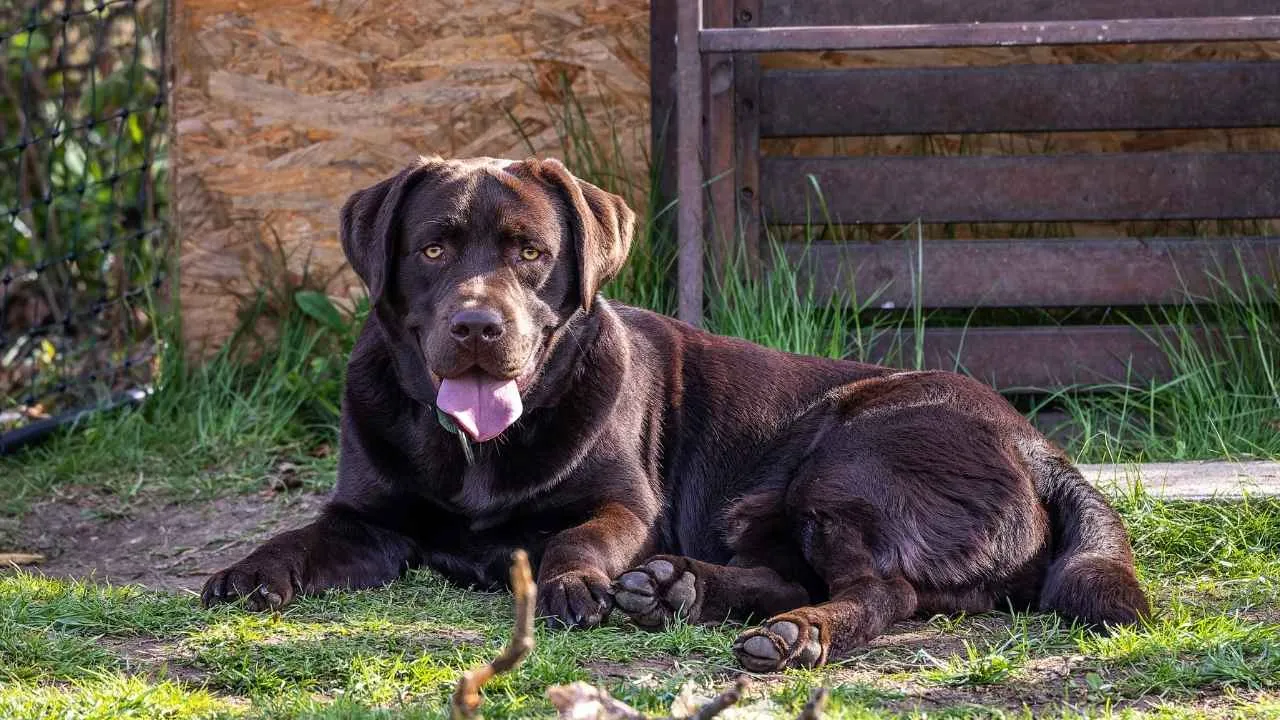
Also known simply as the Lab, the Labrador Retriever originated in Newfoundland, where “St. John’s dogs” assisted fishermen in the 1600s by retrieving fish and hauling nets. In the 1800s, some of these dogs were brought to England, where they were refined into prized sporting companions for the aristocracy.
Today, they stand 21.5–24.5 inches tall, weigh 55–80 pounds, and have a life expectancy of 10–12 years. PetMD says the Labrador Retriever ranks among the most favored dog breeds in the United States.
Their sturdy build, dense water-resistant coat in black, chocolate, or yellow, and distinctive otter-like tail make them exceptional swimmers and reliable working dogs. Belonging to the Sporting Group, Labs are known for their intelligence, adaptability, and friendly nature. This is one of the most intelligent dog breeds.
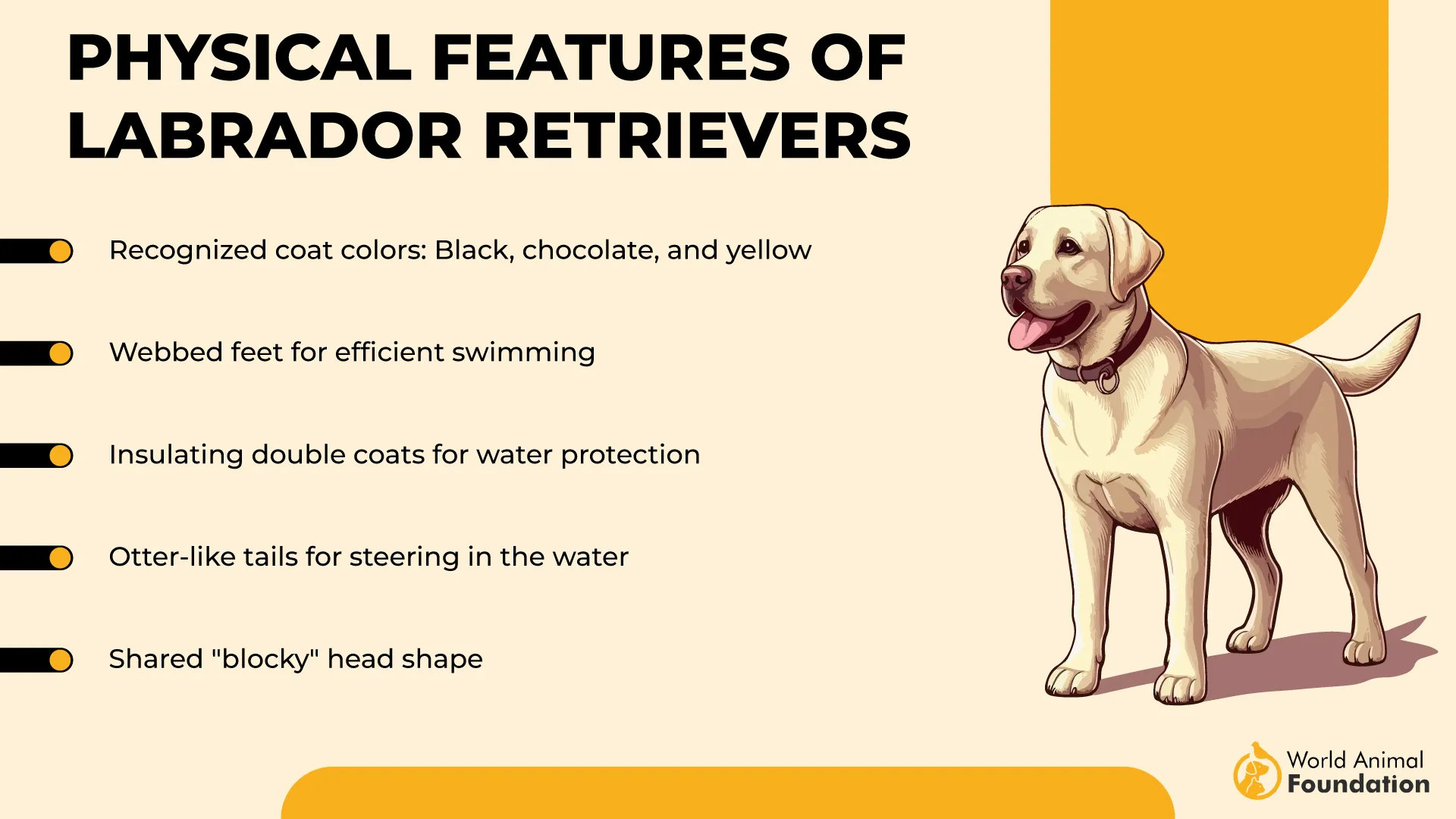
Training
Labradors are quick learners with a natural eagerness to please, making them highly trainable for roles such as guide work, therapy, and search-and-rescue. Positive reinforcement methods work best, as they respond enthusiastically to rewards and praise.
Early socialization and consistent training help channel their energy productively, while interactive games like fetch can keep them mentally and physically engaged. Due to their intelligence, they excel in obedience trials and can master complex commands with relative ease.
Fun Fact: In 2001, a yellow service Labrador named Endal saved his disabled owner’s life through a series of extraordinary actions, earning the title “Dog of the Millennium.”
2. Golden Retriever
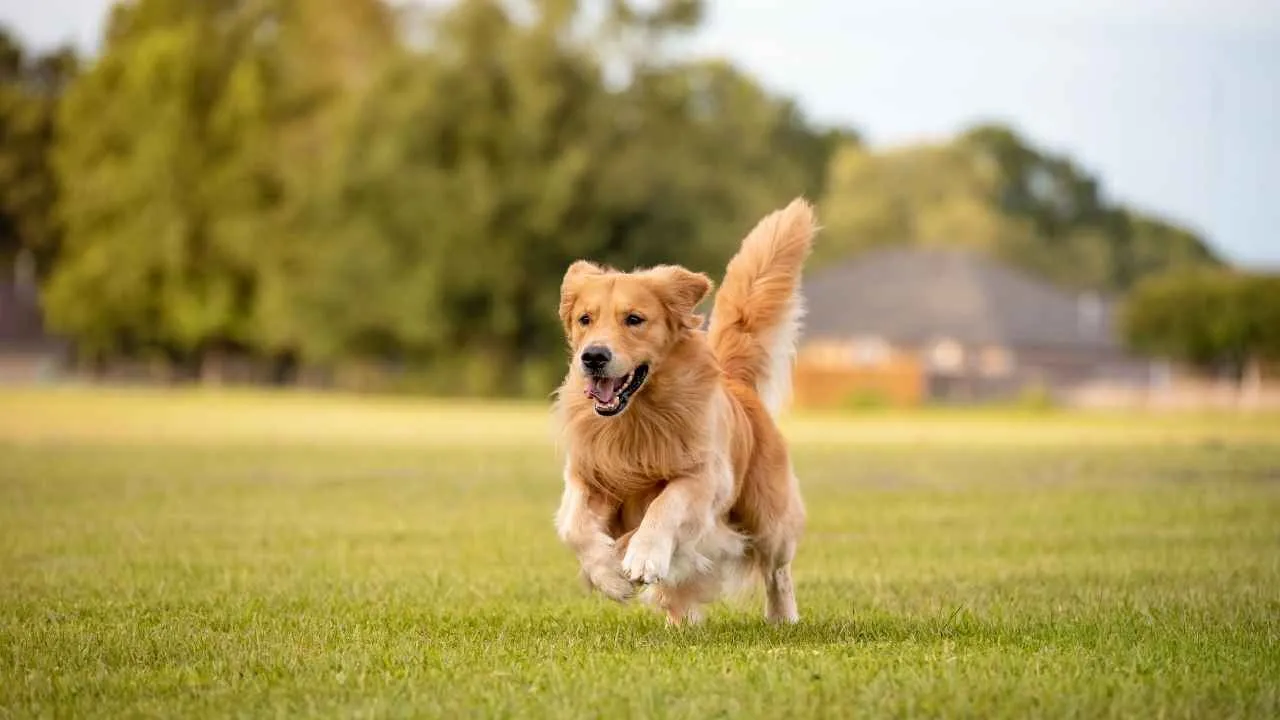
Also known simply as the Golden, the Golden Retriever originated in Scotland in the late 19th century. Developed by Dudley Marjoribanks, later Lord Tweedmouth, the breed began with a rare yellow puppy from a Wavy-Coated Retriever litter, crossed with a Tweed Water Spaniel.
Over time, selective breeding produced a talented retriever well-suited to the Scottish climate and capable of excelling both on land and in water. PDSA says Golden Retrievers can be excellent family pets for active households because of their high energy levels.
Recognized for their beauty, intelligence, and affectionate temperament, Goldens are now among the most popular dog breeds in the United States. They stand 21.5–24 inches tall, weigh 55–75 pounds, and live 10–12 years. Their dense, water-resistant coat ranges in shades of golden brown and is longer on the neck, thighs, tail, and back of the legs.
Training
Golden Retrievers are highly intelligent, eager to please, and gentle by nature—making them responsive and relatively easy to train. They excel in hunting, retrieving, obedience, and service or therapy work. Food motivation, combined with positive reinforcement, helps them learn commands quickly and retain skills for the long term.
Fun Fact: All Golden Retrievers trace back to an 1868 litter at Guisachan House in Scotland, and U.S. President Gerald Ford’s Golden, Liberty, was often photographed at the White House.
3. Flat-Coated Retriever
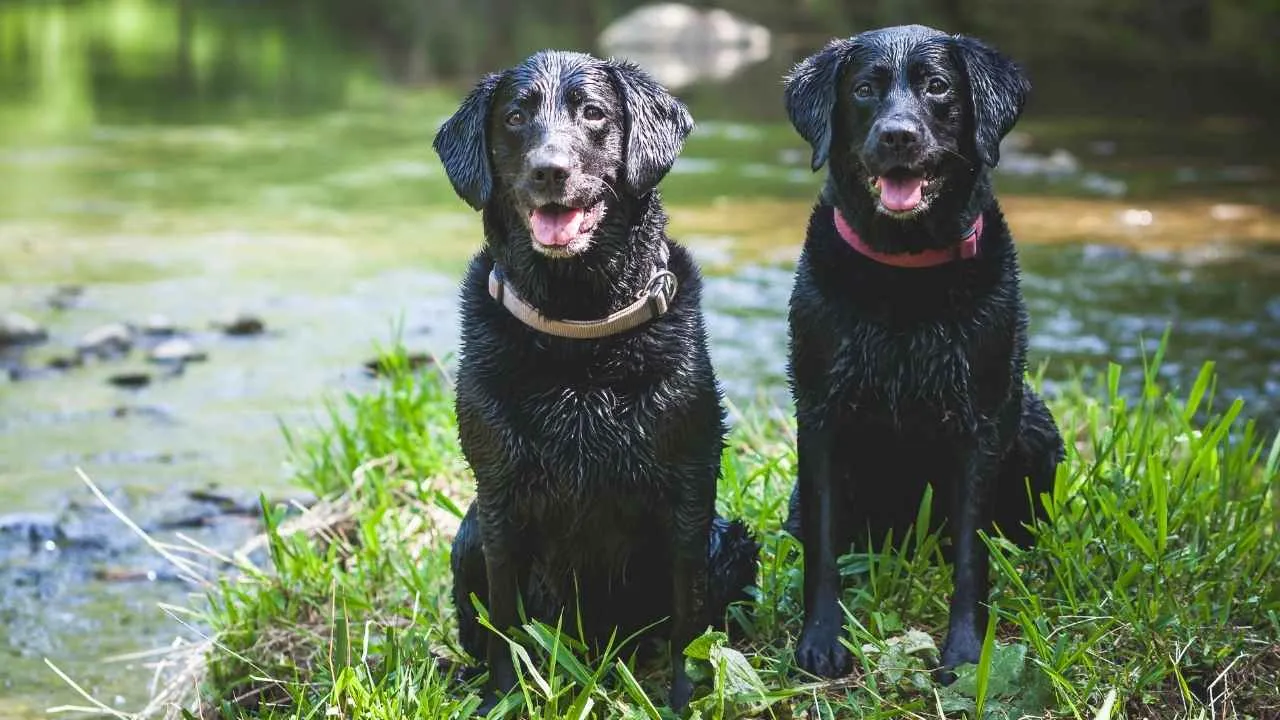
The Flat-Coated Retriever, sometimes referred to simply as the “Flat-Coat,” originated in England in the 1870s, developed by S.E. Shirley through crosses of Newfoundland-type dogs with setters, sheepdogs, and spaniel-like water dogs. AKC says the Flat-Coated Retriever is a happy and positive dog.
Once one of the most popular gun dogs, it later declined in numbers as other retriever breeds rose to prominence. Belonging to the Sporting Group, this breed stands 22–24.5 inches tall, weighs 55–80 pounds, and has a life span of around 8–10 years.
Its hallmark features include a long, elegant head, a lustrous flat-lying coat in solid black or liver, and feathering along the legs and tail that offers protection from harsh terrain and icy water.
Training
Intelligent, eager to please, and full of energy, Flat-Coats respond best to positive, reward-based training methods. Their cheerful, playful disposition means they thrive on interactive sessions that combine mental challenges with physical activity.
Early socialization and consistent, engaging training help channel their enthusiasm productively, making them excel in retrieving, agility, and obedience work.
Fun Fact: The breed’s distinctive head shape not only gives it a refined appearance but also contributes to its famously kind and intelligent expression.
4. Curly-Coated Retriever
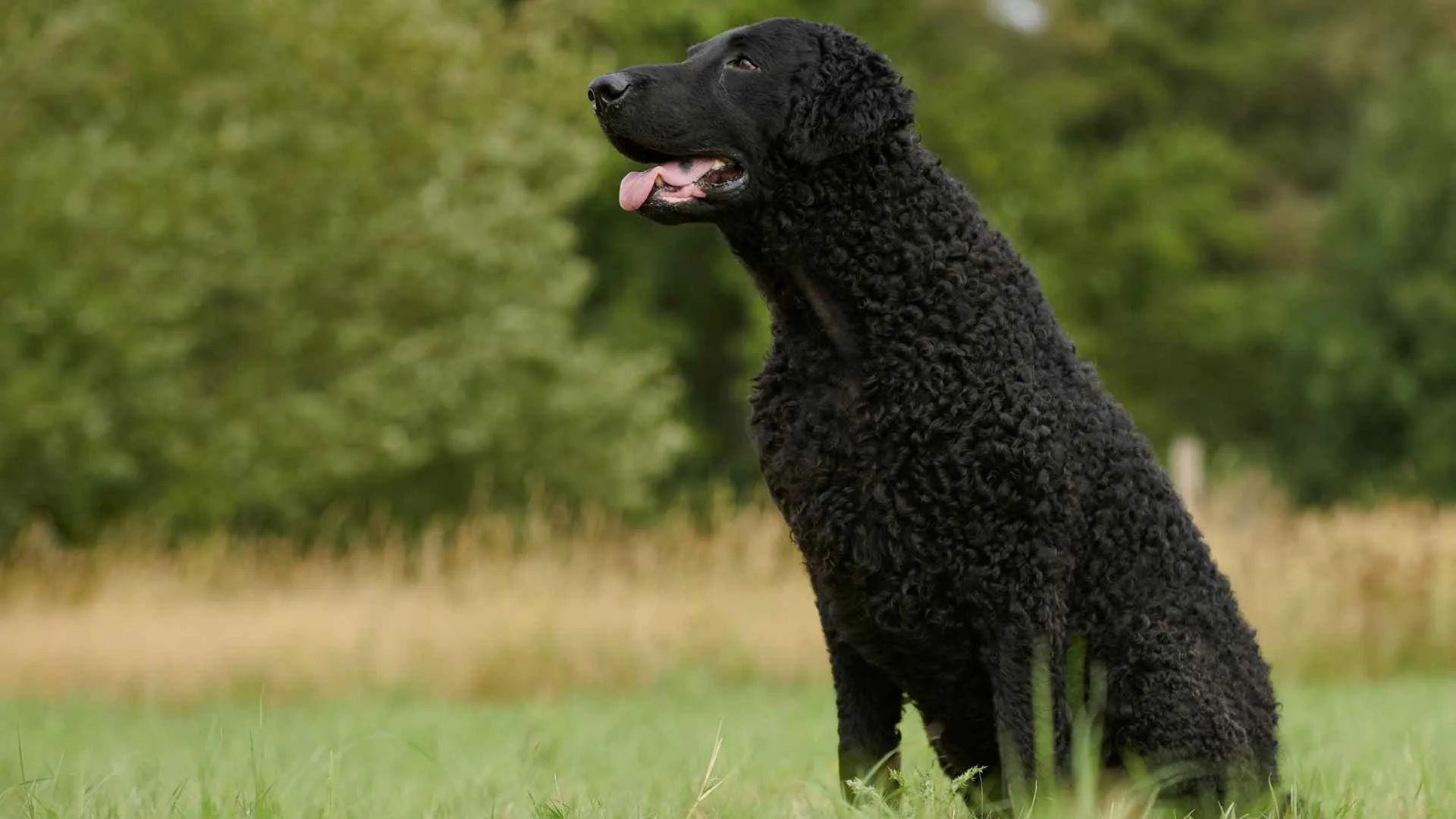
The Curly-Coated Retriever, often called the “Curly,” is one of the oldest retriever breeds, with origins tracing back to 16th-century England. Believed to descend from the English Water Spaniel, St. John’s Newfoundland, retrieving setter, and later the Poodle, this breed was designed for versatile hunting on both land and water.
Recognized for its dense, tight, water-resistant curls in black or liver, the Curly is both striking and practical for harsh conditions.
Adults stand 23–27 inches tall, weigh 60–95 pounds, and belong to the Sporting Group, with a lifespan of 10–12 years. While independent in nature, they remain devoted and eager to please their families.
Training
Curlies are intelligent and quick learners, but may display a more independent streak than other retrievers. Early socialization and consistent, positive training methods are essential for harnessing their abilities.
Their problem-solving skills make them highly capable in advanced training, but sessions should be engaging and varied to maintain focus. Mental stimulation through fieldwork, retrieving games, and obedience challenges helps bring out their best qualities.
Fun Fact: The Curly-Coated Retriever gained American Kennel Club recognition in 1924 and remains a favored hunting companion in New Zealand and Australia.
5. Chesapeake Bay Retriever
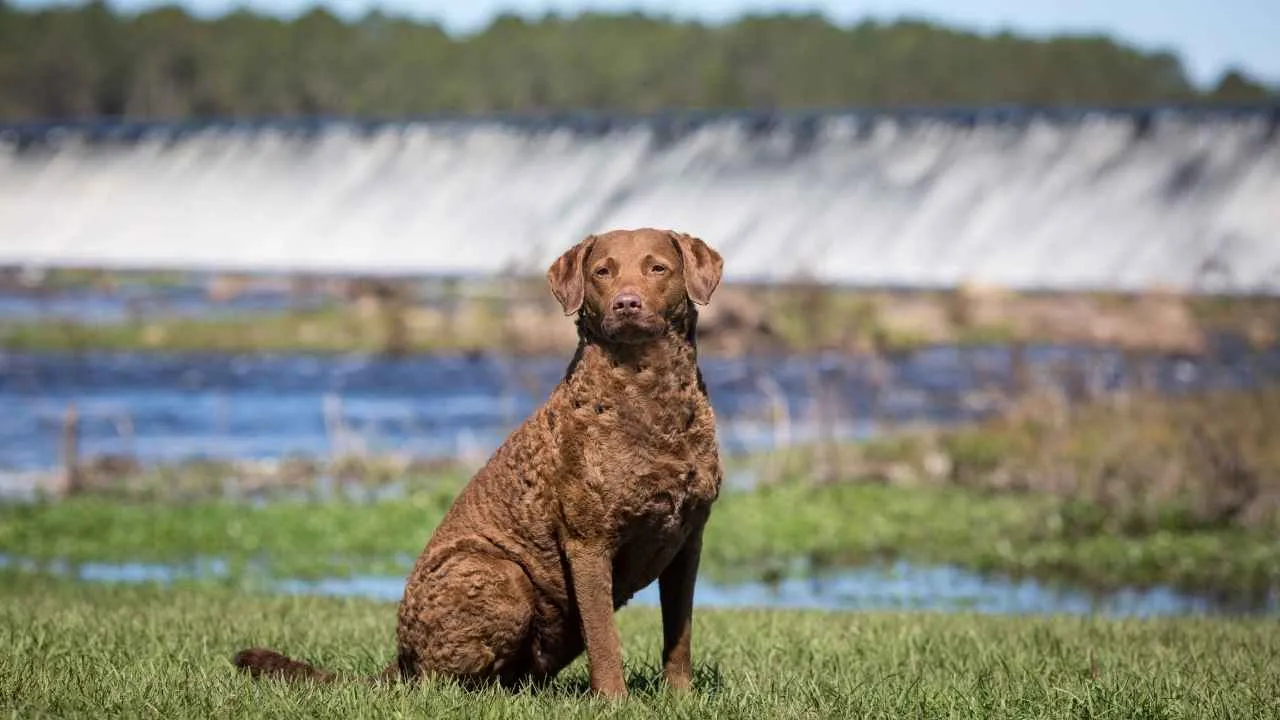
Also called the Chessie, the Chesapeake Bay Retriever originated in the United States during the 19th century, descending from two St. John’s Newfoundland puppies rescued from a shipwreck off Maryland’s coast in 1807.
Interbreeding with local dogs, possibly including the Otterhound, Flat-Coated Retriever, and Curly-Coated Retriever, produced a powerful, intelligent gundog with unmatched skill in waterfowl hunting. Standing 21–26 inches tall and weighing 55–80 pounds, Chessies belong to the Sporting Group and have a life expectancy of 10–13 years.
Their dense, oily, water-repellent coat—often wavy on the back—comes in solid shades of brown, sedge, or deadgrass, paired with amber or yellow eyes and a broad head.
Training
This highly intelligent dog is independent and strong-willed, making early, consistent training essential. They respond best to firm yet positive reinforcement, as overly harsh methods can damage trust.
Socialization from a young age helps manage their naturally protective instincts, ensuring they remain well-mannered companions. Their sharp minds thrive on variety, so incorporating both obedience drills and retrieval games keeps them mentally engaged.
Fun Fact: The Chessie was so effective at duck hunting in the late 1800s and early 1900s that commercial hunters preferred them over any other breed for supplying restaurants and markets.
6. Nova Scotia Duck Tolling Retriever
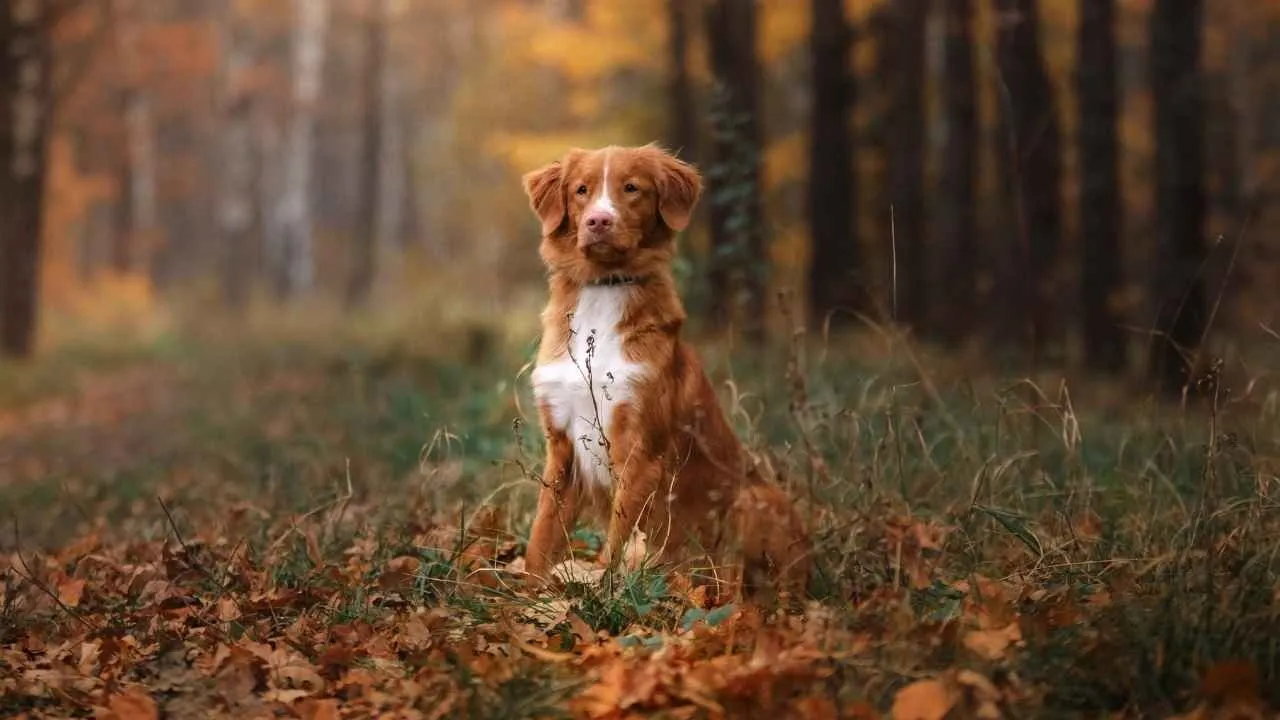
Also called the Toller, Yarmouth Toller, Decoy Dog, or Little River Duck Dog, this compact and athletic retriever was developed in the early 19th century in Nova Scotia, Canada. Standing 17–21 inches tall and weighing 35–50 pounds, Tollers have an average lifespan of 11–14 years.
Their fox-like red coat, often accented with white markings, is water-repellent and paired with a feathered tail used in their signature hunting style—“tolling.” Mimicking the play of a fox along the shoreline, Tollers lure waterfowl closer to hunters before retrieving the downed birds.
Training
Energetic, intelligent, and eager to work, Tollers thrive with consistent, positive reinforcement training. Early socialization helps manage their wariness toward strangers and curbs their high-pitched, “screaming” bark when excited.
They learn quickly but require mental stimulation to channel their strong prey drive productively, especially in homes with smaller pets. Obedience, scent work, and retrieving games keep them sharp and engaged.
Fun Fact: The Nova Scotia Duck Tolling Retriever holds the record for the longest name in the American Kennel Club stud book, even longer than the Petit Basset Griffon Vendéen.
7. American Water Spaniel
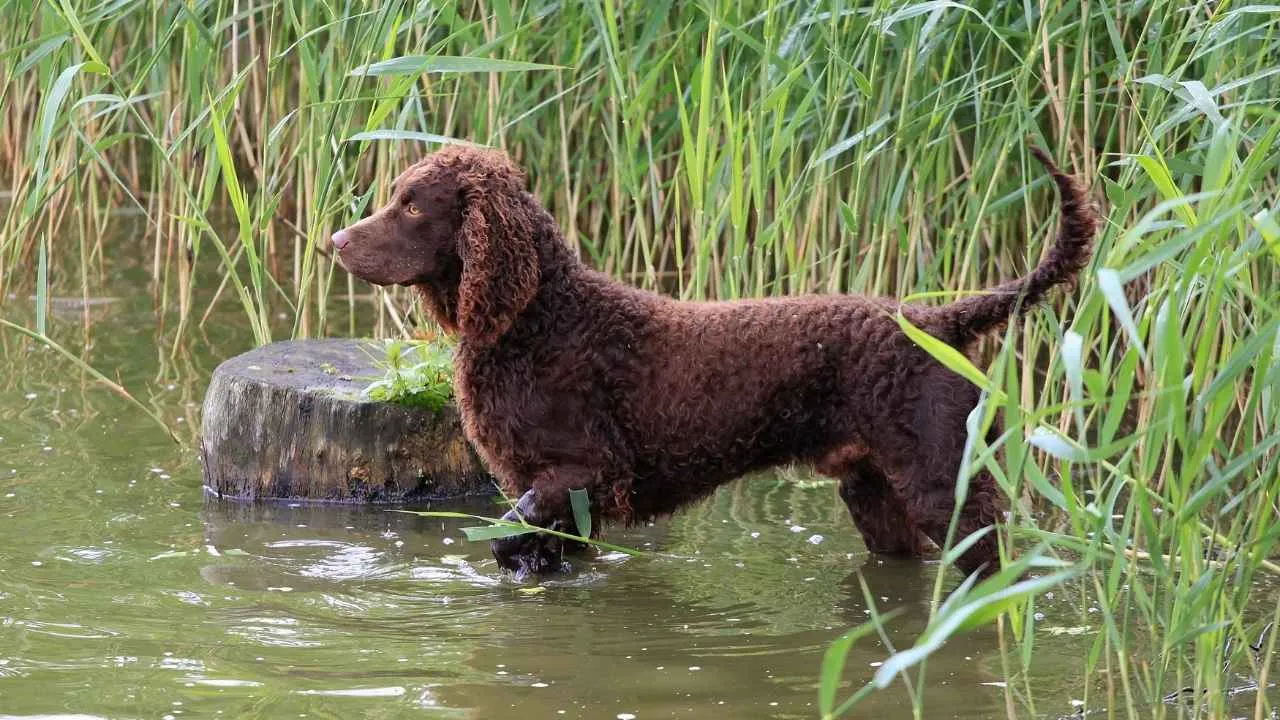
The American Water Spaniel, sometimes called the AWS, is a rare yet versatile sporting breed developed in the American Midwest, particularly Wisconsin and Minnesota, in the late 1800s.
Thought to have descended from the Irish Water Spaniel and Curly-Coated Retriever, it was bred to excel at hunting and retrieving both on land and in water. Adults stand 15–18 inches tall, weigh 25–45 pounds, and typically live 10–14 years.
Recognized for their dense, water-resistant curls in solid liver or dark brown, they also feature long, lobular ears, hazel to dark brown eyes, and a feathered or curled tail. Agile and affectionate, they make excellent companions for active families.
Training
These intelligent breeds are quick learners with a strong desire to please, but they can be independent-minded. Positive reinforcement and early socialization are key to preventing timidity or unwanted aggression.
Their intelligence and work ethic make them capable of mastering complex tasks, especially in retrieving, obedience, and field activities. Early exposure to different environments and other dogs helps shape their well-rounded temperament.
Fun Fact: In 1990, fewer than 300 American Water Spaniels were registered with the AKC, making them one of the rarest U.S.-origin breeds.
Conclusion
Choosing among the best smart retriever dog breeds means finding a companion that blends trainability, versatility, and a deep bond with their human family. While retrievers shine with their willingness to please and high canine intelligence, they are not alone in the ranks of the smartest dog breeds. Many excel in roles beyond hunting and retrieving, thriving as therapy companions, service dogs, and skilled partners in demanding tasks.
Other intelligent breeds also demonstrate remarkable abilities. The Border Collie, often praised as the ultimate herding dog, uses its natural instinct to manage livestock with precision. German Shepherds, known for their loyalty and adaptability, combine sharp minds with courage, making them invaluable in police work, protection, and assistance roles.
Whether you’re drawn to the focus of a working breed or the eagerness of a retriever, the smartest dogs bring not just skill, but a unique capacity to connect with and enrich the lives of the people they serve.


